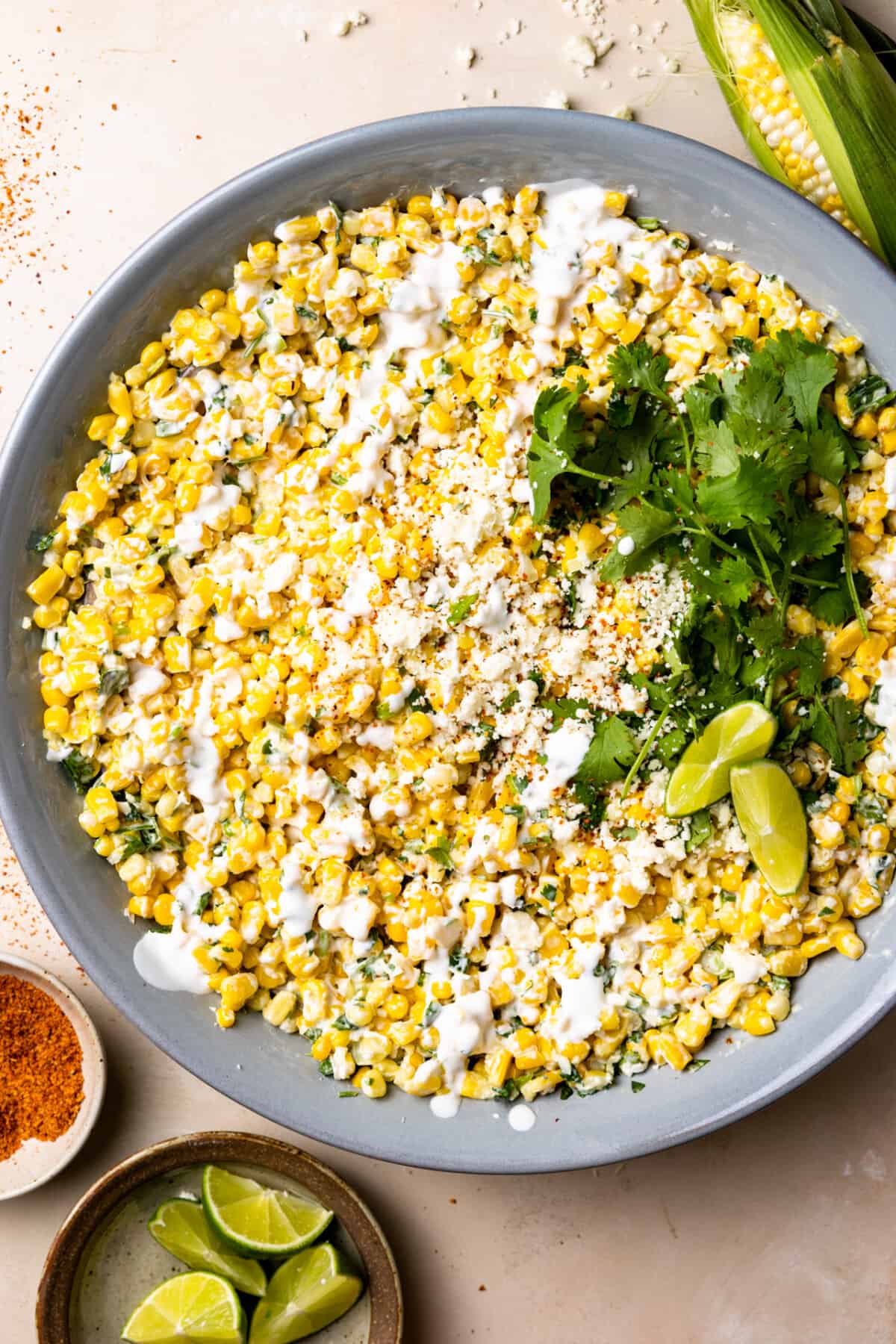Looking to add some zing to your Mexican recipes? Try cotija cheese! This salty and crumbly cheese is a favorite in savory dishes like tacos, enchiladas, tostadas, and soups.
Cotija cheese is a type of Mexican cheese that is commonly used in a variety of dishes. It is a salty, crumbly cheese that has a distinct flavor and texture. It is named after the town of Cotija in the state of Michoacán, Mexico, where it originated. It is pronounced Koh-tee-hah.
The cheese is made from cow’s milk and aged for several months. It is usually sold in small rounds or crumbled into pieces. The texture is similar to feta cheese, but it is saltier and has a stronger flavor.
Cotija cheese often gets used as a garnish, though it’s worth exploring on its own, even when not creating a Mexican dish. Cotija is an excellent cheese in salads, and can be mixed into meatballs, veggie burgers, and other dishes where feta might be the main dairy.

How To Use It
One of the most common uses is with Mexican cuisine. Use it as a topping for dishes such as tacos, enchiladas, and refried beans. You can also use it in salads and as a garnish for soups.
Possibly the most popular use of this cheese is when making Elotes, or Mexican street corn. Elote is grilled corn on the cob that is typically covered in a mixture of mayonnaise, chili powder, lime juice, and cotija cheese. The cheese adds a salty, tangy flavor to the dish that balances out the sweetness of the corn.

Another Mexican cheese, this one is soft and crumbles also and has a similar texture. The taste is much more mild, milky, slightly tangy, and not nearly as salty. This makes a wonderful substitute for cotija.
If you’re unable to get Mexican cheeses, Feta is a close substitute. It has a soft, crumbly texture just like cotija and has a rich, tangy and salty flavoring. The flavor is slightly more mild than cotija, but as a substitute this is as close as you will get.
This is an Italian cheese that is typically finely ground, but it can be grated, crumbled or shaved. The taste is strong, tangy and salty. It is also lactose free.
This creamy cheese can be crumbled also and has a nice mild, mellow flavoring. Texture wise, it’s very similar.
The flavoring of añejo is very similar, it is slightly more bold because it is simply aged cotija cheese. If you are able to find this, it’s a great substitute.
- Refrigerator: Store it in an airtight container in the fridge until you’re ready to use it.The shelf life varies depending on the aging process. However, it should stay fresh for almost a month, while aged cotija may last even longer.
- Freezer: freeze in an air tight container for 6-8 months.
Cotija is not a melting cheese. This particular cheese crumbles nicely, which is why it’s used heavily as a topping or garnish.
Cotija cheese is made using animal rennet, this means that if you are following a vegetarian diet, you will want to avoid this particular type of cheese.
Cotija cheese has little to no traces of lactose, most people who are lactose intolerant are able to tolerate this particular cheese.
Cotija Cheese Guide | Types of Cotija and How to Use Cotija
FAQ
What can I use cotija cheese for?
Do you shred or crumble cotija cheese?
What does cotija cheese taste like?
Does cotija cheese go on tacos?
What can you eat with Cotija cheese?
Two of the most popular dishes using cotija cheese are elote and esquites, which feature grilled corn with lime-tinged crema and finely grated cotija. Some recipes allow for either cotija cheese or queso fresco, another Mexican cheese that’s milder and softer than cotija.
Where can I buy cotija cheese?
Cotija cheese is a very popular food staple in any Mexican or Latin American home. As such, you can find Cotija at almost every grocery store where other Mexican cheeses like queso Oaxaca and panela cheese might be sold. Cotija is sold in blocks, wedges or grated and ready to use as a table cheese.
What is a good substitute for Cotija?
But if you’ve run out of cotija and just need a simple substitute, there are a few other cheeses to try. Parmesan and pecorino romano are both hard Italian cheeses that are most similar to grated cotija because of the salty flavor. Another Italian cheese, ricotta salata, is also sometimes considered a good substitute for the aged cheese.
Does cotija cheese melt?
Once aged, cotija cheese takes on the salty, sharper characteristics akin to Parmesan and Romano cheeses. It’s easy to crumble when fresher, and grate better when aged. Cotija doesn’t melt like other cheeses, which makes it a great option when topping a hot dish. It is priced similarly to feta and ricotta salata. Cotija Cheese Vs. Queso Fresco
